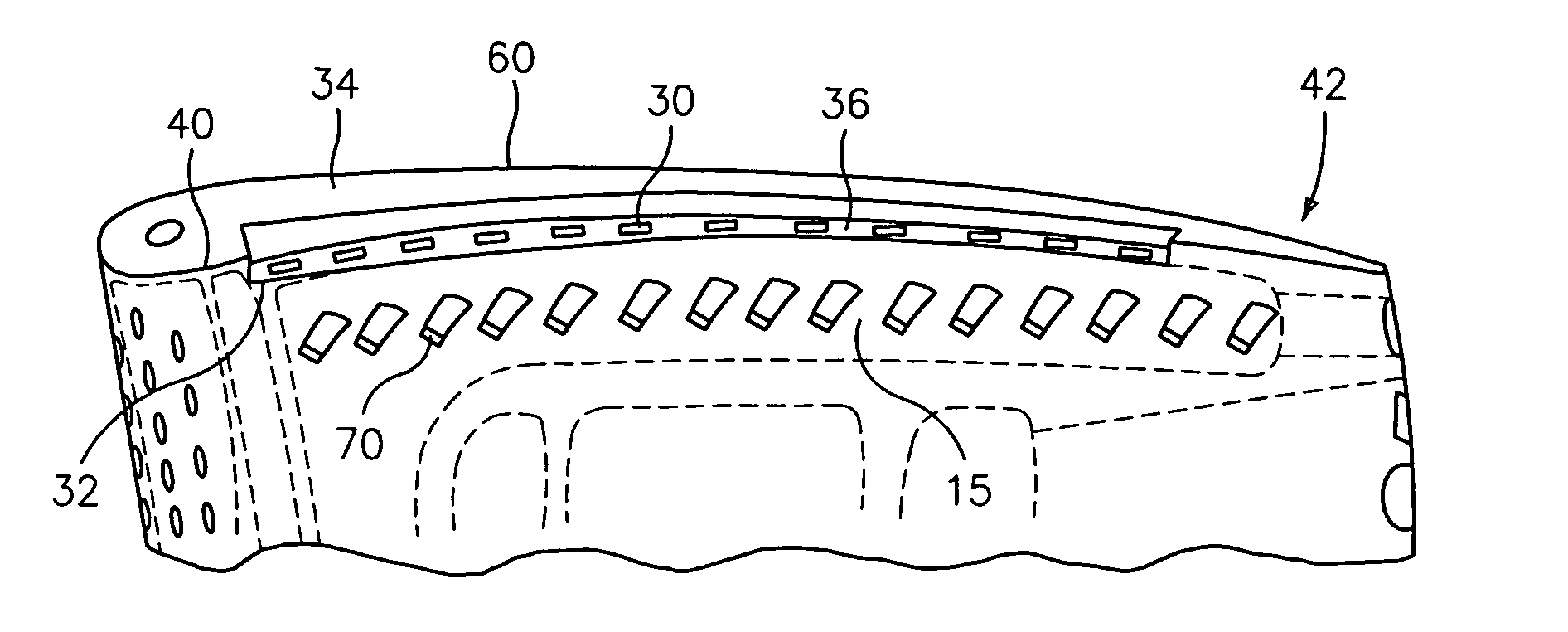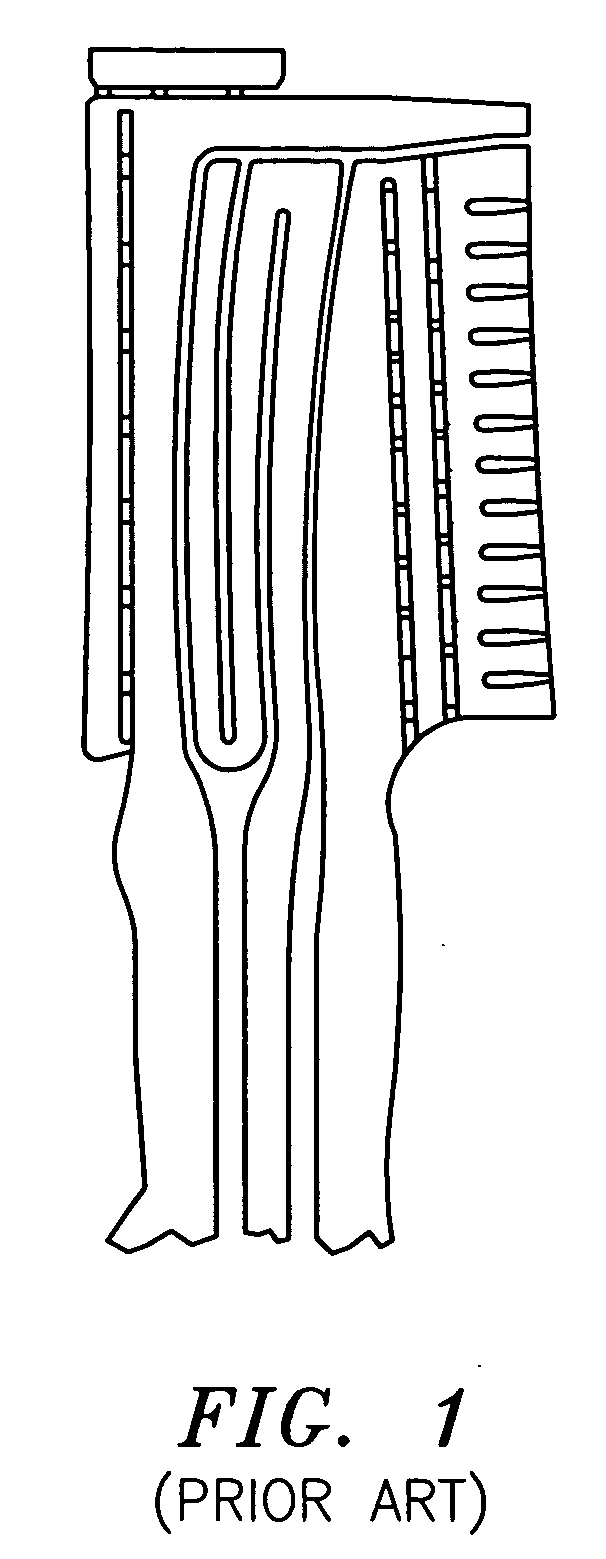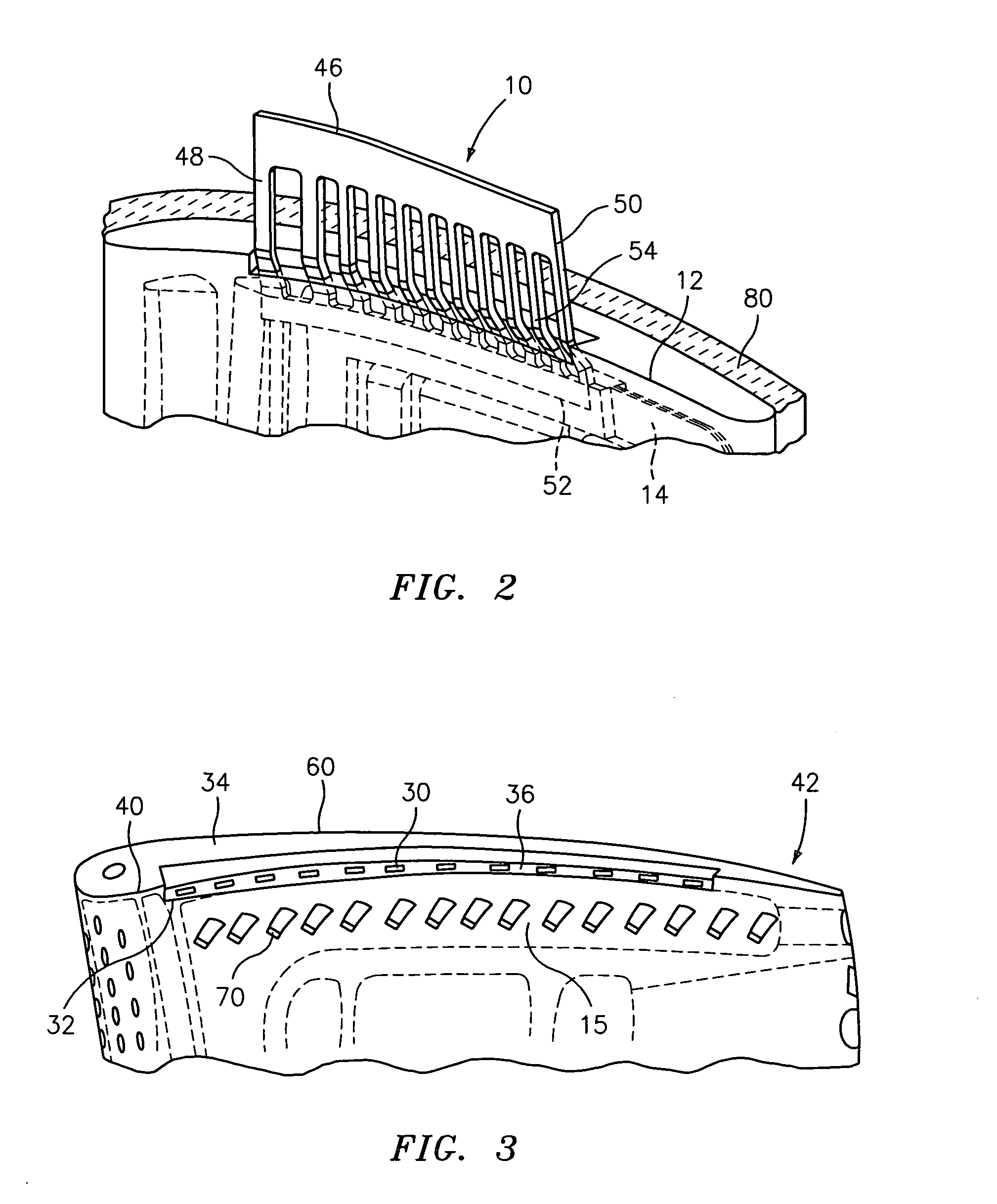RMC-defined tip blowing slots for turbine blades
a turbine blade and blowing slot technology, applied in the direction of machines/engines, waterborne vessels, foundry moulds, etc., can solve the problems of oxidation and erosion of the tip of the rotor blade, difficult to determine the external thermal boundary conditions near the tip, and difficult to design a cooling configuration. , to achieve the effect of more reliable casting process and efficient use of cooling air
- Summary
- Abstract
- Description
- Claims
- Application Information
AI Technical Summary
Benefits of technology
Problems solved by technology
Method used
Image
Examples
Embodiment Construction
)
[0018]As noted before, a new tip cooling design for a turbine blade is proposed here that utilizes refractory metal core technology in order to help create a tip cooling scheme that is capable of more efficient use of cooling air and a more reliable casting process.
[0019]Referring now to FIG. 2, a relatively thin, approximately 0.015″, refractory metal core element 10 is used to stabilize a tip region 12 of a ceramic core 14 during the casting process. The ceramic core 14 is positioned within a mold 80, only a portion of which has been shown. The ceramic core 14 may have the configuration of a laterally oriented passageway 15 to be formed in the airfoil tip region 34. The refractory metal core element 10 is printed out of the airfoil tip region 34 during casting and is located laterally of the ceramic core 14. Preferably, the refractory metal core element 10 is positioned adjacent a side of the mold which forms the pressure side 40 of the airfoil portion 42. The refractory metal co...
PUM
| Property | Measurement | Unit |
|---|---|---|
| refractory | aaaaa | aaaaa |
| pressure | aaaaa | aaaaa |
| heat | aaaaa | aaaaa |
Abstract
Description
Claims
Application Information
 Login to View More
Login to View More - R&D
- Intellectual Property
- Life Sciences
- Materials
- Tech Scout
- Unparalleled Data Quality
- Higher Quality Content
- 60% Fewer Hallucinations
Browse by: Latest US Patents, China's latest patents, Technical Efficacy Thesaurus, Application Domain, Technology Topic, Popular Technical Reports.
© 2025 PatSnap. All rights reserved.Legal|Privacy policy|Modern Slavery Act Transparency Statement|Sitemap|About US| Contact US: help@patsnap.com



